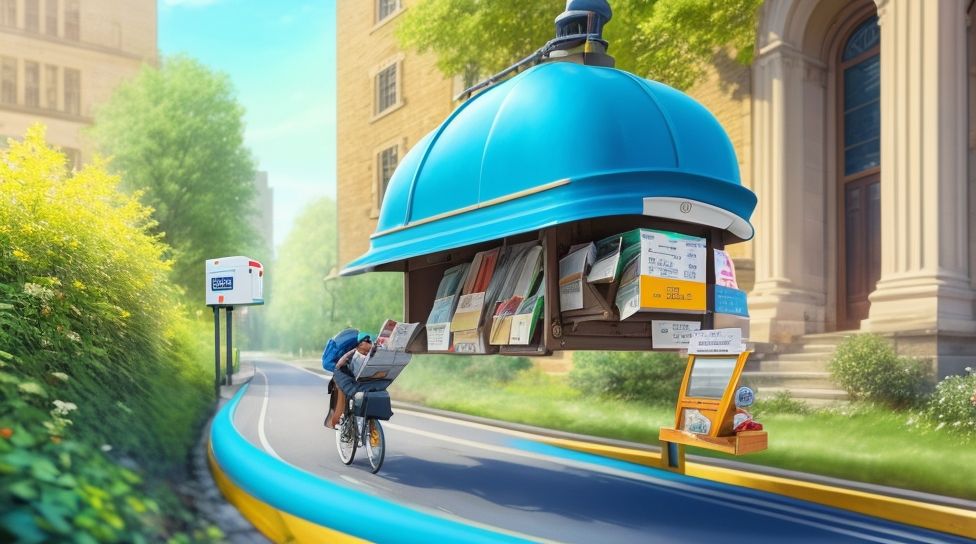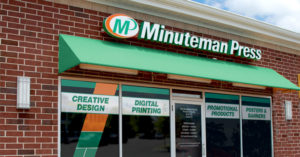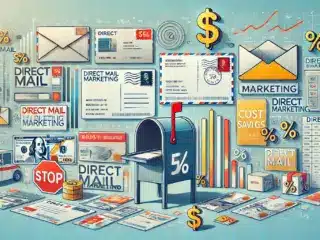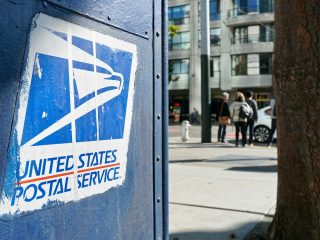Last Updated on August 2, 2024 by Carlos Alonso
Mailing services have come a long way! We’ve gone from snail mail to the digital revolution. Now, email, instant messaging, and social media are replacing or at the vary least compete with traditional postal services. While we are in the direct mail business… it is very interesting to learn more about the history and how digital marketing has changed the way we communicate.
It’s hard to imagine waiting weeks or months for a letter now. Just a few clicks and we can send important documents and messages instantly. It has changed businesses and made personal communication more efficient.
Plus, we can now send multimedia messages with images, videos, and audio clips. This allows expressing ourselves in more dynamic ways and connecting deeper.
Here’s an example of how the evolution of direct mailing services has impacted lives: Anna was an entrepreneur who used to rely on traditional direct mail marketing. She’d mail postcards, and anxiously wait for responses.
But when she discovered email, her business started to creep up. She could instantly reach clients without worrying about time delays or the government. This saved her time and money, and helped her business flourish.
Digital communication has made communication faster, more convenient, and more effective. As technology advances, what exciting developments will we see in the world of communication?
Evolution of Mailing Services
The transformation of postal services: A comprehensive exploration of the shift from traditional mail to digital communication
The Evolution of Mailing Services:
| Mailing Service | Description | Year Introduced |
|---|---|---|
| Postal Mail | Conventional system of sending physical letters and packages | 1635 |
| Courier Services | Utilization of private companies to deliver packages and important documents | 1913 |
| Fax Machines | Facilitated the transmission of scanned documents over telephone lines | 1964 |
| Popular form of electronic communication, allowing instant delivery of messages | 1971 | |
| Instant Messaging | Real-time online chat platforms for quick text-based conversations | 1988 |
| Video Conferencing | Enables visual and audio communication between individuals or groups in different locations | 1990 |
| Social Media Messaging | Integration of messaging features within social networking platforms | 2006 |
| Mobile Messaging Apps | Dedicated applications for sending messages, photos, videos, and audio files via mobile devices | 2009 |
In addition to the aforementioned milestones, the evolution of mailing services has been heavily influenced by advancements in technology and the Internet. These developments have not only facilitated faster and more efficient communication but have also led to the decline of traditional postal services.
One crucial moment in the history of mailing services was the introduction of email in 1971. This marked a significant shift from physical mail to electronic communication. The ability to send messages instantaneously revolutionized the way people exchanged information, making traditional mail seem slow and cumbersome in comparison.
It is fascinating to trace the progression from traditional postal mail to the current era of mobile messaging apps. Each stage in the evolution of mailing services has brought forth new methods of communication, challenging the dominance of the previous ones.
Understanding the history and transformation of mailing services provides valuable insights into how communication has evolved over time. It is evident that technology continues to shape our communication landscape, leading to more efficient and convenient ways of staying connected in an increasingly digital world.
While snails may be slow, snail mail was the original ‘sent’ revolution, proving that speed isn’t everything when it comes to delivering embarrassing childhood photos.
Snail Mail: The Beginning of Mailing Services
Mailing services, or snail mail, started the long-standing communication system. Ancient civilizations had limited technology and infrastructure for sending messages and items. But creative methods were used, like the Egyptians’ courier network.
As societies progressed, reliable communication systems were needed. The Persians developed the ‘Angarium’, using mounted messengers. This revolutionized communication.
In Europe, societies were divided into regions and communication was a challenge. Guilds and monasteries had their own courier systems.
The Renaissance period saw publicly operated postal systems in Europe. Structured routes were provided and fees charged depending on distance or weight. Examples include England’s Royal Mail in 1516 and France’s La Poste in 1477.
Technology has since transformed mailing services. Telegraphy in the 19th century allowed for electronic messages to be sent across distances almost instantly.
Now, digital communication is popular. But traditional mailing services are still important for sending parcels and documents.
Postal Systems and the Advances in Delivery
Postal systems have come a long way in terms of delivery! These advancements have completely changed the way mail is transported and delivered.
Here’s a table that shows the progression of postal systems and the corresponding advances in delivery:
| Postal Systems | Advances in Delivery |
|---|---|
| Ancient Egypt | Messengers |
| Roman Empire | Courier services |
| Middle Ages | Horse couriers |
| Industrial Revolution | Steam trains |
| Modern Era | Aircraft, electronic sorting, and barcode tracking systems |
There are also other notable achievements. One of them is the introduction of postage stamps in the mid-19th century. This made it easier to pay for postal services.
It’s amazing to note that the first known mailing system dates back to ancient Egypt. They used messengers to deliver documents. This information gives us an insight into the history of modern-day postal services.
Fact Source: Smithsonian Magazine
Digital Communication: The Rise of Emails and Instant Messaging
With the advent of technology, traditional mailing services have evolved into a new era of communication known as digital communication. This transformation encompasses the rise of emails and instant messaging, revolutionizing the way people exchange information.
In this modern age, the traditional form of communication through postal mail has been largely replaced by electronic means. Emails have become the go-to method for sending messages, documents, and even formal letters. The instantaneous nature of email enables individuals and businesses to communicate efficiently and effortlessly, transcending physical boundaries.
Moreover, instant messaging has gained tremendous popularity in recent years. This real-time form of communication allows individuals to chat and exchange information instantly, regardless of their geographical locations. With features like voice and video calling, instant messaging platforms have become the preferred choice for personal and professional conversations.
In addition, digital communication provides numerous advantages over traditional mailing services. The speed of delivery is far greater, and documents can be sent and received within seconds, eliminating the need for physical transportation. Furthermore, digital communication offers convenience and accessibility, allowing individuals to communicate anytime and from anywhere with an internet connection.
Pro Tip: When using digital communication platforms, it is essential to maintain professionalism in your conversations. Use proper grammar and avoid abbreviations or informal language to ensure effective communication.
Email: Where you can let your fingers do the talking and your autocorrect do the apologizing.
Email: The Electronic Equivalent of Letter Writing
Emails have revolutionized letter writing by providing a digital version. They are cost-effective, attach files, documents, or images to messages, and offer a record of conversations. Emails are used in professional settings to quickly update and collaborate. Plus, they can simultaneously communicate with multiple recipients. Furthermore, emails have advanced beyond plain text with features like formatting, hyperlinks, and email signatures. Fun fact, the first email was sent in 1965 by Ray Tomlinson! He used the @ symbol as a separator for usernames and domain names, paving the way for modern email systems.
Instant Messaging: The Real-Time Communication Revolution
Instant Messaging has totally changed real-time communication! Its popularity and ease means it’s used around the world.
- It lets people chat, no matter where they are.
- Instead of phone calls or meetings, it’s fast and simple to share information.
- Real-time messaging boosts team performance.
- Read receipts and typing indicators show when messages are delivered and read.
- It’s also possible to share photos, videos and documents.
Plus, Instant Messaging platforms offer more features. Voice and video calls, emojis and stickers let you express yourself.
Instant Messaging is so important for personal and business use. It connects people, making the world smaller.
Tip: When using Instant Messaging professionally, keep messages direct and clear. Make sure they mean what you intend!
Impact on Society and Communication Patterns
The impact of digital communication on society and communication patterns can be analyzed from various perspectives. Considering the evolution of mailing services, it is evident that there have been significant shifts in the way people communicate and interact with each other. To further understand the impact on society and communication patterns, let’s explore a table that provides insights into the changes brought about by digital communication:
| Aspect | Traditional Mailing | Digital Communication |
|---|---|---|
| Speed | Relatively slow | Near-instantaneous |
| Cost | Expensive for long distances | Affordable and often free |
| Accessibility | Geographically limited | Global reach |
| Paper consumption | High | Reduced or eliminated |
| Storage and search | Physical files and archives | Digital storage and easy search |
These points highlight the advantages of digital communication over traditional mailing services. Digital communication allows for faster, more affordable, and accessible communication, while also reducing paper consumption and enabling easier storage and retrieval of information. In addition to these changes, digital communication has also transformed social dynamics and communication patterns. It has facilitated the rise of social media platforms, enabling people to connect and communicate globally. Online messaging and video conferencing have become integral parts of both personal and professional communication. One interesting fact related to the impact of digital communication on society is that as of January 2021, there were approximately 4.66 billion active internet users worldwide. This statistic, provided by DataReportal, demonstrates the immense reach and influence of digital communication in today’s society. Overall, the evolution of mailing services to digital communication has revolutionized the way society communicates and interacts. It has not only improved the speed and efficiency of communication but has also fostered global connections and reshaped social dynamics. Digital communication: where you can send a message in seconds and still wait hours for a reply.
Efficiency and Convenience of Digital Communication
Digital communication enables multitasking. We can attend virtual meetings while doing other tasks. Email threads help track conversations. Document sharing platforms let us collaborate in real-time – no need for emails.
Social media has changed how we interact. Facebook, Twitter, Instagram are now part of our lives. News spreads fast, but too much digital communication can lead to a lack of personal connection. Non-verbal cues are also missing.
To stay updated, we must embrace new tools and platforms. That way we can adapt to dynamics quickly.
Challenges and Concerns in the Digital Era
Navigating the digital era brings various challenges and concerns that affect society and communication. Technology advances quickly, leading to use of digital platforms and raising questions about privacy. Cybercriminals develop more methods, making cybersecurity a risk to individuals, companies, and even governments. This creates a digital divide between those with access and those left behind. Misinformation spreads quickly, impacting public opinion and decision-making. Additionally, new challenges arise, such as ethical dilemmas concerning AI and automation. The Cambridge Analytica scandal is an example of how vulnerable personal data can be when misused.
The Future of Mailing Services
The Future of Mailing Services is Shaping Automated Digital Communication. As technology advances, traditional mail is being replaced with digital communication methods that offer greater efficiency and convenience. Email, messaging apps, and electronic signatures are just a few examples of the evolving landscape of mailing services.
With the rise of cloud computing and artificial intelligence, the future of mailing services will see a significant shift towards automated processes. Intelligent algorithms will streamline the sorting and delivery of digital mail, reducing manual labor and increasing accuracy. This automation will not only improve efficiency but also enhance security measures, ensuring that sensitive information is protected during transit.
Another aspect of the future of mailing services is the integration of various communication channels. In addition to traditional email, users will have the ability to send and receive messages across different platforms seamlessly. This integration will not only save time but also eliminate the need for multiple applications, providing a more streamlined and user-friendly experience.
Furthermore, the future of mailing services will also involve the expansion of smart technologies. Smart devices such as connected mailboxes and delivery drones will revolutionize the way mail is received and sent. These devices will offer real-time notifications, secure package storage, and even autonomous delivery options, further enhancing the convenience and efficiency of the mailing process.
True Fact: According to a report by Statista, the number of email users worldwide is projected to reach 4.48 billion by 2024.
Who needs stamps when you can just send a text? Welcome to the 21st century, where snail mail and digital communication coexist like a long-distance relationship on Facebook.
Integration of Traditional and Digital Communication
Integrating traditional and digital communication is a key trend for the future of mailing services. This links the reliability and familiarity of traditional mail with the speed and convenience of digital channels.
Let’s look at the different aspects of each:
Traditional Communication:
- Requires physical delivery
- Longer delivery time
- Tangible and personal
- Higher cost
Digital Communication:
- Instantaneous
- Immediate response
- Virtual and widespread reach
- Cost-effective
This integration helps businesses improve customer experience. They can use traditional mail for important documents, while relying on digital for quick updates. It also gives them a multi-channel approach. This increases their chances of engagement and conversion.
To make the most out of this integration, here are some suggestions:
- Personalized direct mail campaigns. Combining traditional mail with personalization can create impactful campaigns.
- Implement email marketing automation. Automating workflows saves time and keeps messages relevant.
- Leverage social media messaging. Integrating social media platforms into customer service enables real-time conversations.
These suggestions help businesses optimize messaging strategies. They can cater to different preferences while maximizing reach, leading to enhanced customer satisfaction and business growth.
Emerging Technologies Shaping the Future of Mail Services
The mail industry is being revolutionized by emerging technologies. Autonomous drones, blockchain, and AI are reshaping delivery operations, promising faster, more secure, and environmentally friendly mail services.
Drones can navigate urban settings and deliver packages directly to customers’ doorsteps, bypassing traffic congestion and reducing reliance on traditional delivery methods.
Blockchain provides transparency and security in mail tracking and verification, minimizing fraud and theft, and enhancing trust in the mailing process.
AI-powered sorting systems process vast volumes of mail quickly and accurately, while AI-driven chatbots improve communication channels between postal services and end-users.
Renewable energy sources, such as solar panels and electric vehicles, reduce carbon footprints and maintain reliable service levels.
To leverage these technologies, postal organizations need to invest in research and development and form partnerships with tech companies. Governments should also enact favorable regulations to promote innovation.
Autonomous drones, advanced sorting systems, and renewable energy sources will bring efficiency and sustainability to mail services. The future of mailing services holds immense potential!
The Dangers of Malware and Hacking
As mail services become increasingly reliant on advanced technologies, the risk of cyber threats, such as malware and hacking, also rises. Malware can compromise the integrity of mail operations, leading to data breaches, loss of sensitive information, and operational disruptions. It’s essential for postal organizations to implement robust cybersecurity measures to protect against these threats.
Hacking poses a significant risk to the security and privacy of mail services. Understanding how to tell if your phone is hacked can provide insights into protecting mail systems from similar vulnerabilities. By staying vigilant and proactive, postal organizations can mitigate the risks associated with cyber threats and ensure the continued reliability of their services.
Renewable energy sources such as solar panels and electric vehicles reduce carbon footprints and maintain reliable service levels.
Postal organizations need to invest in research and development and form partnerships with tech companies to take advantage of these technologies. Governments should also enact favorable regulations to promote innovation.
Autonomous drones, advanced sorting systems, and renewable energy sources will bring efficiency to mail services. This will ensure environmentally sustainable practices. The potential for the future of mailing services is immense!
Conclusion
The evolution of mailing services has seen a shift from the traditional ‘snail mail’ to digital communication. This transformation has transformed the way people connect, introducing a new era of communication.
Email and instant messaging platforms have improved communication. Physical barriers no longer exist; messages reach their recipients within seconds, with no manual sorting or delivery.
Innovative features like read receipts, file attachments, and group chats make communication easier and more organized. Technology advancements have also introduced secure encryption methods to protect sensitive data.
Multimedia elements have been integrated into digital communication. People can now send images, videos, and audio files with ease. Interactions are enriched with content beyond traditional text-based messages. Video conferences and voice calls have revolutionized long-distance business relationships.
Statista reports that there were over 4 billion active email users in 2020. This number reflects the reliance on digital communication in modern society.
Frequently Asked Questions
FAQ
Q: What is snail mail?
A: Snail mail refers to the traditional method of sending letters and parcels using physical mail services, typically through postal systems. It involves the physical transportation of mail from the sender to the recipient.
Q: How has digital communication changed mailing services?
A: Digital communication has revolutionized mailing services by introducing faster and more efficient methods of sending messages. With email, instant messaging, and various online platforms, communication now happens in real-time, eliminating the need for physical transportation of mail and significantly reducing delivery times.
Q: What are the advantages of digital communication over traditional mail?
A: Digital communication offers several advantages over traditional mail, including instant delivery, cost-effectiveness, convenience, global reach, and ease of storage. It allows for quick and easy exchange of information, saving time and resources compared to physical mail.
Q: Are there any drawbacks to relying solely on digital communication?
A: While digital communication has numerous benefits, it also has some drawbacks. Dependence on technology makes digital communication susceptible to technical failures, internet outages, and security threats. Additionally, the lack of physical presence may lead to misunderstandings, as non-verbal cues can be lost in digital conversations.
Q: Are physical mail services still relevant in the digital age?
A: While digital communication has become dominant, physical mail services still hold relevance in several areas. Legal documents, official notices, packages requiring physical delivery, and certain personal correspondence often still rely on traditional mail services for their reliability, security, and assurance of physical presence.
Q: Will digital communication completely replace traditional mail services?
A: It’s unlikely that digital communication will completely replace traditional mail services. While digital methods have gained prominence, the need for physical mail remains in certain circumstances. Both digital and traditional mail services will continue to coexist, each serving specific purposes based on convenience, security, and practicality.















